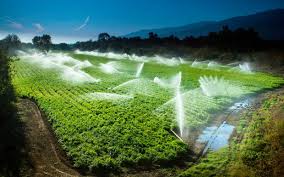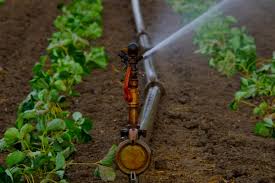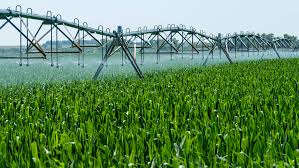Irrigation is the artificial application of water to crops for the purpose of supplying moisture essential for growth, providing crop assurance against short drought, and facilitating continuous cropping among others.
This practice of irrigation complements food supply obtained during the rainfed agriculture so as to increase food production to enhance the attainment of food sufficiency. The water requirement of crops varies with crop and environment the crops are found. In this article, the water requirement of crops and factors that influence it are discussed.
Read Also: Vaccination Program for Poultry Chickens
Definition and Meaning of Crop Water Requirement

Water requirement of crop (WR) is that quantity of water, regardless of its sources, required by a crop in a given period of time for its maturity. It includes losses due to evapotranspiration or consumptive use plus the losses during the application of irrigation water which may be unavoidable.
It can also be defined as the depth or amount of water needed to meet the water loss through evaporation. In other words, it is the amount of water needed by the various crops to grow optimally.
The water requirement of crops varies with crops and it mainly depends on:
1. Climate factors: such as sunlight or radiation, temperature, rainfall, and wind. Sunny and hot climate crop need more water per day than in a cloudy and cool climate.
2. Crop type: Crops with cuticles or waxes on their leaves surface reduce evapotranspiration and as such require less water than those that do not have. Crops like maize or sugarcane hold more water than crops like millet and sorghum.
Also, nature and shape of the crop leaf affect the crop water requirement, this is so because the surface for evapotranspiration are more in broad-leafed crops, as such they need more water than narrow-leaved crops.
3. Soil type: The retention and transmissivity of water in the soil affect water requirement of crops.
The table below shows the major climatic factors and their effect on crops based on water requirement of crop:
Effect of Major Climatic Factors on Crop Water Requirement
| Crop Water Requirement | Climatic Factor | High Water Required | Low Water Required |
|---|---|---|---|
| Temperature | Hot | Cool | |
| Humidity | Low (dry) | High (humid) | |
| Wind speed | Windy | Little wind | |
| Sunshine | Sunny (no clouds) | Cloudy (no sun) |
The highest crop water requirements are thus found in areas which are hot, dry, windy, and sunny. The lowest values are found when it is cool, humid, and cloudy with little or no wind.
Read Also: Vaccination Program for Poultry Chickens
Water Requirement for Different Crops During Entire Production Period
| Crop | Water Requirement (mm) |
|---|---|
| Rice | 900 – 2,500 |
| Wheat | 450 – 650 |
| Sorghum | 450 – 650 |
| Maize | 500 – 800 |
Classification of Crops Based on Water Requirement

On the basis of water requirement of crops, crops are grouped into three different groups namely:
1. Hydrophytes: These are crops that require lot of water for their growth and development e.g. paddy rice, banana, sugarcane etc. They are usually grown on swampy land or in valley where there is lot of water or water for irrigation.
2. Mesophytes: These are crops that require moderate water for their growth and development. They are between hydrophytes and xerophytes e.g. maize, sorghum, soya beans, groundnut, tomato etc. They are usually grown on well-drained soils.
3. Xerophytes: These are crops that require little water for their growth and development. Xerophytes can withstand drought and survive in presence of mist and dew e.g. cowpea, millet, date palm, etc. They are crops found in the Sahel and desert areas.
Importance of Understanding Crop Water Requirement in Farming
The knowledge of water requirement of crops helps a farmer to know the quantity of water to apply to different crops based on their water needs. This will encourage proper utilization of nutrients in the soil as over-irrigation would lead to leaching of nutrients beyond the root zone of crop.
Do you have any questions, suggestions, or contributions? If so, please feel free to use the comment box below to share your thoughts. We also encourage you to kindly share this information with others who might benefit from it. Since we can’t reach everyone at once, we truly appreciate your help in spreading the word. Thank you so much for your support and for sharing!

